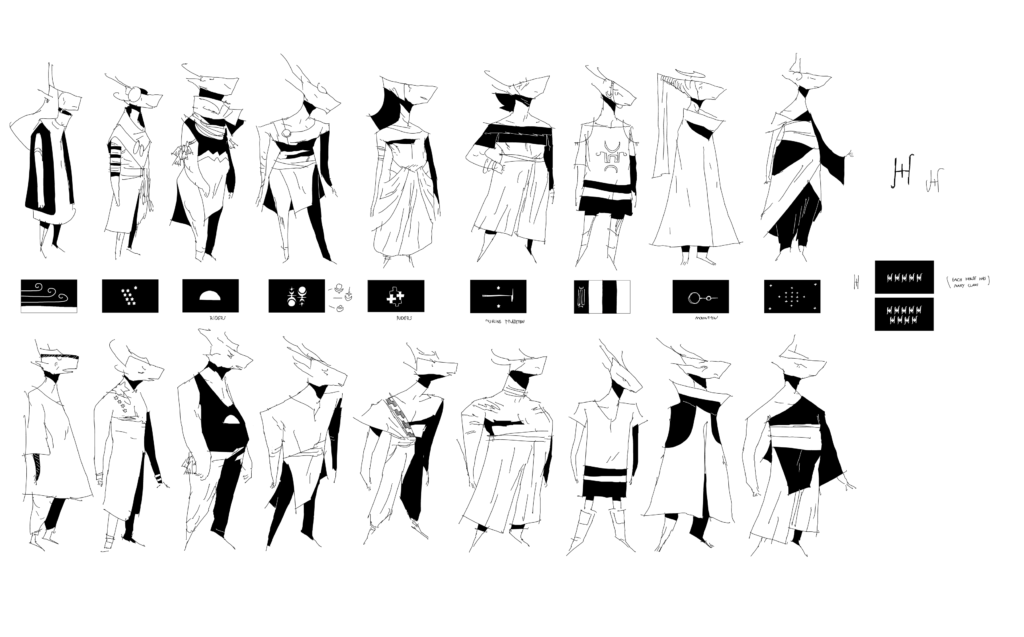as always, playing with things to see what i like and what i don’t. in real life people wouldn’t dress like they do in the fire nation (“we all have to wear red!”), but it definitely helps the reader. you have to be a little heavy handed sometimes to drive a point home.

these are some ideas i have for the Otigo people. at this point they will not be the main focus but will impact other nations in the area through their actions and culture. they are a loose group of many disparate tribes and i was dabbling with how to make the body shapes and outfits distinct but not too different (they are all part of one people group). at this point i’m leaning towards reducing the diversity even though I like most of the outfits in a vacuum. ideally i want the reader to be able to fairly easily recognize any of these characters as from the otigo area. for that purpose they’re not there yet. how close should they be to each other? that is the question.



